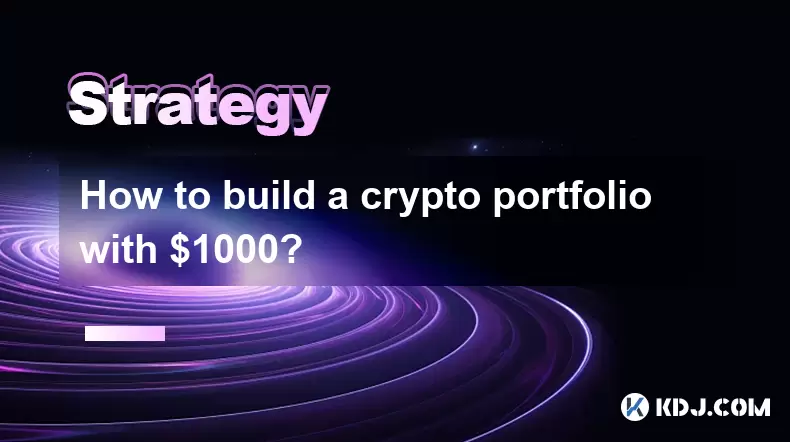-
 Bitcoin
Bitcoin $115000
0.12% -
 Ethereum
Ethereum $3701
4.50% -
 XRP
XRP $3.081
2.99% -
 Tether USDt
Tether USDt $0.0000
-0.01% -
 BNB
BNB $767.9
1.45% -
 Solana
Solana $169.5
3.13% -
 USDC
USDC $0.9999
0.01% -
 Dogecoin
Dogecoin $0.2106
4.30% -
 TRON
TRON $0.3334
1.62% -
 Cardano
Cardano $0.7564
2.54% -
 Stellar
Stellar $0.4165
0.76% -
 Hyperliquid
Hyperliquid $38.75
0.25% -
 Sui
Sui $3.593
3.00% -
 Chainlink
Chainlink $17.08
3.59% -
 Bitcoin Cash
Bitcoin Cash $573.6
4.35% -
 Hedera
Hedera $0.2508
-0.84% -
 Avalanche
Avalanche $23.07
6.46% -
 Ethena USDe
Ethena USDe $1.001
-0.02% -
 Litecoin
Litecoin $120.8
8.17% -
 UNUS SED LEO
UNUS SED LEO $8.943
-0.32% -
 Toncoin
Toncoin $3.400
-5.60% -
 Shiba Inu
Shiba Inu $0.00001255
1.54% -
 Uniswap
Uniswap $9.908
6.32% -
 Polkadot
Polkadot $3.718
2.10% -
 Monero
Monero $303.0
-0.74% -
 Dai
Dai $0.9999
-0.02% -
 Bitget Token
Bitget Token $4.392
0.91% -
 Cronos
Cronos $0.1403
6.31% -
 Pepe
Pepe $0.00001076
1.13% -
 Aave
Aave $267.2
1.80%
What should I do when SHIB plummets? Is it more appropriate to cut losses or cover positions?
When SHIB plummets, investors must decide whether to cut losses or cover positions, considering market trends, investment goals, and risk tolerance.
Apr 29, 2025 at 10:35 am

When the value of SHIB, or Shiba Inu cryptocurrency, plummets, investors often face a critical decision: whether to cut their losses or to cover their positions. This article will delve into the strategies and considerations you should weigh before making such a decision, focusing specifically within the scope of the cryptocurrency circle.
Understanding SHIB's Market Dynamics
SHIB, a meme cryptocurrency, is known for its high volatility. This volatility is driven by several factors, including market sentiment, social media trends, and broader market movements. When SHIB plummets, it's essential to understand that these drops can be sudden and influenced by a variety of external factors. For instance, a tweet from a notable figure or a shift in the overall crypto market can lead to significant price changes.
Assessing Your Investment Goals
Before deciding whether to cut losses or cover positions, you must revisit your investment goals. Are you in SHIB for the long haul, believing in its potential for future growth, or are you a short-term trader looking to capitalize on quick gains? Your strategy will differ based on your investment horizon. Long-term investors might see a plummet as a buying opportunity, whereas short-term traders might view it as a signal to exit.
Cutting Losses: When and How
Cutting losses involves selling your SHIB holdings to prevent further depreciation in value. This strategy is often considered when you believe the price will continue to fall or if the asset no longer aligns with your investment strategy. Here are steps to cut losses effectively:
- Evaluate the Market: Look at the current market trends and sentiment towards SHIB. Are there any upcoming events or news that could further impact its price?
- Set a Stop-Loss: If you haven't already, set a stop-loss order to automatically sell your SHIB when it reaches a certain price point. This can help limit your losses.
- Execute the Sale: Once you've decided to cut losses, sell your SHIB through your trading platform. Ensure you're aware of any fees or taxes associated with the transaction.
- Review Your Portfolio: After selling, reassess your overall portfolio to ensure it aligns with your risk tolerance and investment goals.
Covering Positions: Strategy and Considerations
Covering positions typically refers to buying back assets you've previously sold short, or in the context of SHIB, it might mean doubling down on your investment by buying more at a lower price. This strategy can be risky but can also lead to significant gains if the price rebounds. Here's how to approach covering positions:
- Analyze the Price Drop: Determine if the price drop is a temporary dip or a sign of a longer-term trend. Use technical analysis tools to identify potential support levels.
- Assess Your Risk Tolerance: Consider how much additional risk you're willing to take on. Covering positions means increasing your exposure to SHIB.
- Buy More SHIB: If you decide to cover positions, purchase more SHIB at the lower price. Ensure you're using a secure and reputable exchange.
- Monitor the Market Closely: After covering positions, keep a close eye on market movements and be prepared to sell if the situation changes.
Emotional and Psychological Factors
Investing in cryptocurrencies like SHIB can be emotionally taxing, especially during significant price drops. Emotional discipline is crucial. Fear and greed can lead to poor decision-making. It's important to stick to your investment strategy and not let emotions drive your actions. Consider setting up alerts and using automated trading tools to help manage your emotions.
Tax Implications and Financial Planning
When deciding whether to cut losses or cover positions, consider the tax implications. Selling SHIB at a loss might allow you to claim a tax deduction, while buying more could increase your potential capital gains tax if the price rebounds. Consult with a tax professional to understand how your decisions will affect your financial planning.
Risk Management Strategies
Effective risk management is essential when dealing with volatile assets like SHIB. Diversifying your portfolio, setting stop-loss orders, and only investing what you can afford to lose are key strategies. Additionally, consider using dollar-cost averaging to spread out your investments over time, reducing the impact of sudden price drops.
Frequently Asked Questions
Q: Can I use margin trading to cover positions with SHIB?
A: Yes, you can use margin trading to cover positions with SHIB, but it comes with increased risk. Margin trading allows you to borrow funds to purchase more SHIB, potentially amplifying your gains if the price rebounds. However, if the price continues to drop, you could face a margin call, leading to significant losses. Always ensure you understand the risks and have a solid risk management strategy in place before engaging in margin trading.
Q: How can I predict if SHIB's price will recover after a plummet?
A: Predicting the recovery of SHIB's price is challenging due to its high volatility. However, you can look at several indicators: historical price patterns, market sentiment, upcoming developments or partnerships related to SHIB, and overall trends in the cryptocurrency market. Tools like technical analysis and sentiment analysis on social media platforms can provide insights, but remember that no prediction method is foolproof.
Q: Is it wise to hold onto SHIB during a plummet if I believe in its long-term potential?
A: Holding onto SHIB during a plummet can be a viable strategy if you have a strong belief in its long-term potential. However, ensure that this decision aligns with your overall investment strategy and risk tolerance. Consider setting a stop-loss order to protect against further downside risk, and continue to monitor market conditions and SHIB-specific news that could impact its price.
Q: What are the signs that it's time to cut losses with SHIB?
A: Signs that it might be time to cut losses with SHIB include a sustained downward trend in the price, negative news or developments affecting SHIB, a shift in market sentiment against meme cryptocurrencies, and if the asset no longer fits within your investment strategy. Additionally, if the price breaches key support levels identified through technical analysis, it could be a signal to sell.
Disclaimer:info@kdj.com
The information provided is not trading advice. kdj.com does not assume any responsibility for any investments made based on the information provided in this article. Cryptocurrencies are highly volatile and it is highly recommended that you invest with caution after thorough research!
If you believe that the content used on this website infringes your copyright, please contact us immediately (info@kdj.com) and we will delete it promptly.
- Velo Universe, DEX, and DeFi Security: Navigating the Future of Decentralized Trading
- 2025-08-05 09:25:13
- Bitget Wallet Revolutionizes Solana with Gas-Free Transactions: A New Era for DeFi
- 2025-08-05 09:25:13
- Cryptocurrency, Altcoins, and Profit Potential: Navigating the Wild West
- 2025-08-04 14:50:11
- Blue Gold & Crypto: Investing Disruption in Precious Metals
- 2025-08-04 14:30:11
- Japan, Metaplanet, and Bitcoin Acquisition: A New Era of Corporate Treasury?
- 2025-08-04 14:30:11
- Coinbase's Buy Rating & Bitcoin's Bold Future: A Canaccord Genuity Perspective
- 2025-08-04 14:50:11
Related knowledge

How to avoid common crypto investment mistakes?
Jul 13,2025 at 01:35am
Understanding the Risks of Crypto InvestmentInvesting in cryptocurrency can be highly rewarding, but it also comes with significant risks. One of the ...

What is a long-short crypto strategy?
Jul 15,2025 at 10:56am
Understanding the Basics of a Long-Short Crypto StrategyA long-short crypto strategy is an investment approach where traders simultaneously take long ...

What is a long-short crypto strategy?
Jul 11,2025 at 01:28pm
Understanding the Basics of Long-Short Crypto StrategyA long-short crypto strategy is an investment approach where traders take both long and short po...

How to use the RSI indicator for crypto?
Jul 12,2025 at 03:56pm
Understanding the RSI Indicator in Cryptocurrency TradingThe Relative Strength Index (RSI) is a momentum oscillator used to measure the speed and chan...

Is copy trading a good strategy for crypto beginners?
Jul 12,2025 at 08:28am
Understanding Copy Trading in the Cryptocurrency MarketCopy trading is a strategy where novice traders replicate the trades of experienced investors a...

How to build a crypto portfolio with $1000?
Jul 13,2025 at 08:14pm
Understanding the Basics of Cryptocurrency InvestmentBuilding a crypto portfolio with $1000 starts with understanding the fundamentals of cryptocurren...

How to avoid common crypto investment mistakes?
Jul 13,2025 at 01:35am
Understanding the Risks of Crypto InvestmentInvesting in cryptocurrency can be highly rewarding, but it also comes with significant risks. One of the ...

What is a long-short crypto strategy?
Jul 15,2025 at 10:56am
Understanding the Basics of a Long-Short Crypto StrategyA long-short crypto strategy is an investment approach where traders simultaneously take long ...

What is a long-short crypto strategy?
Jul 11,2025 at 01:28pm
Understanding the Basics of Long-Short Crypto StrategyA long-short crypto strategy is an investment approach where traders take both long and short po...

How to use the RSI indicator for crypto?
Jul 12,2025 at 03:56pm
Understanding the RSI Indicator in Cryptocurrency TradingThe Relative Strength Index (RSI) is a momentum oscillator used to measure the speed and chan...

Is copy trading a good strategy for crypto beginners?
Jul 12,2025 at 08:28am
Understanding Copy Trading in the Cryptocurrency MarketCopy trading is a strategy where novice traders replicate the trades of experienced investors a...

How to build a crypto portfolio with $1000?
Jul 13,2025 at 08:14pm
Understanding the Basics of Cryptocurrency InvestmentBuilding a crypto portfolio with $1000 starts with understanding the fundamentals of cryptocurren...
See all articles

























































































